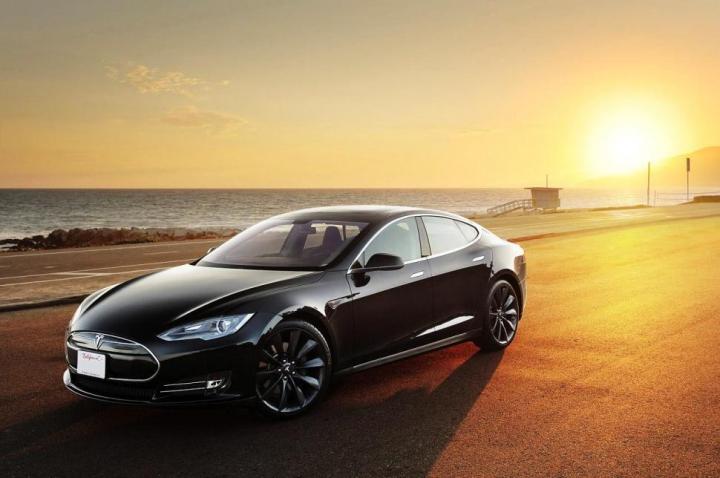
The speculation ended Thursday night in Los Angeles, where Tesla unveiled a revamped version of the Model S, with all-wheel drive, some extra muscle, and futuristic tech.
The “D” stands for dual-motor, one for each axle. Tesla will add the all-wheel drive system — which will likely be shared with the upcoming Model X — to each version of the Model S, offering 60D, 85D, and P85D iterations.
In the P85D, the two motors produce a staggering 691 horsepower and 687 pound-feet of torque, according to Road & Track. That will hurl the Model S from 0 to 60 mph in 3.2 seconds, and on to a top speed of 155 mph. So this electric car will accelerate faster than a Dodge Charger SRT Hellcat.
As a bonus, the system also adds 10 miles of range, meaning cars with the 85-kilowatt-hour battery pack will now be able to travel 275 miles per charge.
Deliveries will start with the P85D in December, followed by the 60D and 85D in February.
Related: Watch Saleen’s Model S-based Foursixteen burn rubber
The “something else” from Musk’s tweet heard ’round the world turned out to be a new suite of driver-assistance features.
Tesla has been quietly adding equipment for lane-departure warning and “speed-assist” speed-limit-identifying features to production cars, but didn’t formally announce them until tonight, along with much more.
The Model S will now feature an “autopilot” system that uses cameras and 360-degree sonar to detect obstacles.
So far, the system allows the driver to change lanes by simply flicking the turn-signal stalk, follow traffic, and even provide warnings to the human driver if he or she is about to plough into a truck.
Tesla says it’s been installing autopilot hardware on every car built for the past two weeks but, unlike the changes made through the company’s over-the-air software updates, it can’t be retrofitted to existing cars.
With some semi-autonomous functions and a slew of onboard sensors, Tesla is taking its first step toward putting a fully self-driving car on the road, while maintaining the Model S wow factor.
Editors' Recommendations
- Tesla to begin production on new, more affordable models
- How to watch Tesla’s Cybertruck delivery event today
- Tesla Model S vs. Model X: Which is right for you?
- Volkswagen ID.4 vs Tesla Model Y
- Tesla launches more affordable Model S and Model X, but there’s a catch


